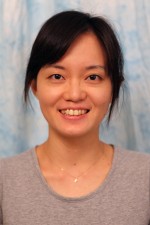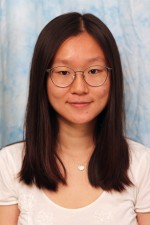Student Talks
Carnegie Mellon University
Learning with Auxiliary Supervision
Abstract: Supervised learning for high-level vision tasks has advanced significantly over the last decade. One of the primary driving forces for these improvements has been the availability of vast amounts of labeled data. However, annotating data is an expensive and time-consuming process. For example, densely segmenting a natural scene image takes approximately 30 minutes. This mode [...]
Inverse Reinforcement Learning with Conditional Choice Probabilities
Abstract: We make an important connection to existing results in econometrics to describe an alternative formulation of inverse reinforcement learning (IRL). In particular, we describe an algorithm to solve the IRL problem, using easy-to-compute estimates of the Conditional Choice Probability (CCP) vector, which is the policy function of an expert integrated over factors econometricians cannot [...]
Carnegie Mellon University
Using Multiple Fidelity Models in Motion Planning
Abstract: Hospitals and warehouses use autonomous delivery robots to increase productivity. Robots must reliably navigate unstructured non-uniform environments which requires efficient long-term operation that robustly accounts for unforeseen circumstances. However, unreliable autonomous robots need continuous operator assistance, which decreases throughput and negates a robot's benefit. Planning with high fidelity models is more likely to lead [...]
Monocular Depth Reconstruction using Geometry and Deep Networks
In this thesis, we explore methods of building dense depth map from monocular video. First, we introduce our multi-view stereo pipeline, which utilizes photometric bundle adjustment for getting accurate depth of textured regions from small motion video. Second, we improve the depth estimation of low-texture region by fusing deep convolutional network predictions. We categorize the [...]
Carnegie Mellon University
Liquid Metal-Microelectronics Integration for a Sensorized Soft Robot Skin
Abstract: Progress in the emerging field of soft robotics depends on the integration of sensors that are capable of sensing, power regulation, and signal processing. Commercially available microelectronics are well suited for these needs, as well as small enough to preserve the natural mechanics of a host system. Here, we present a method for integrating [...]
Carnegie Mellon University
Learning Depth from Monocular Videos using Direct Methods
The ability to predict depth from a single image - using recent advances in CNNs - is of increasing interest to the vision community. Unsupervised strategies to learning are particularly appealing as they can utilize much larger and varied monocular video datasets during learning without the need for ground truth depth or stereo. In previous works, separate pose and [...]
Carnegie Mellon University
Probabilistic Approaches for Pose Estimation
Abstract: Virtually all robotics and computer vision applications require some form of pose estimation; such as registration, structure from motion, sensor calibration, etc. This problem is challenging because it is highly nonlinear and nonconvex. A fundamental contribution of this thesis is the development of fast and accurate pose estimation by formulating in a parameter space [...]
Carnegie Mellon University
Learning-based Lane Following and Changing Behaviors for Autonomous Vehicle
This thesis explores learning-based methods in generating human-like lane following and changing behaviors in on-road autonomous driving. We summarize our main contributions as: 1) derive an efficient vision-based end-to-end learning system for on-road driving; 2) propose a novel attention-based learning architecture with sub-action space to obtain lane changing behavior using a deep reinforcement learning algorithm; [...]
Carnegie Mellon University
Real-to-Virtual Domain Unification for End-to-End Autonomous Driving
Abstract: In the spectrum of vision-based autonomous driving, vanilla end-to-end models are not interpretable and suboptimal in performance, while mediated perception models require additional intermediate representations such as segmentation masks or detection bounding boxes, whose annotation can be prohibitively expensive as we move to a larger scale. More critically, all prior works fail to deal with the notorious [...]
Carnegie Mellon University
Reconstruction of dynamic vehicles from multiple unsynchronized cameras
Despite significant research in the area, reconstruction of multiple dynamic rigid objects (eg. vehicles) observed from wide-baseline, uncalibrated and unsynchronized cameras, remains hard. On one hand, feature tracking works well within each view but is hard to correspond across multiple cameras with limited overlap in fields of view or due to occlusions. On the other [...]









